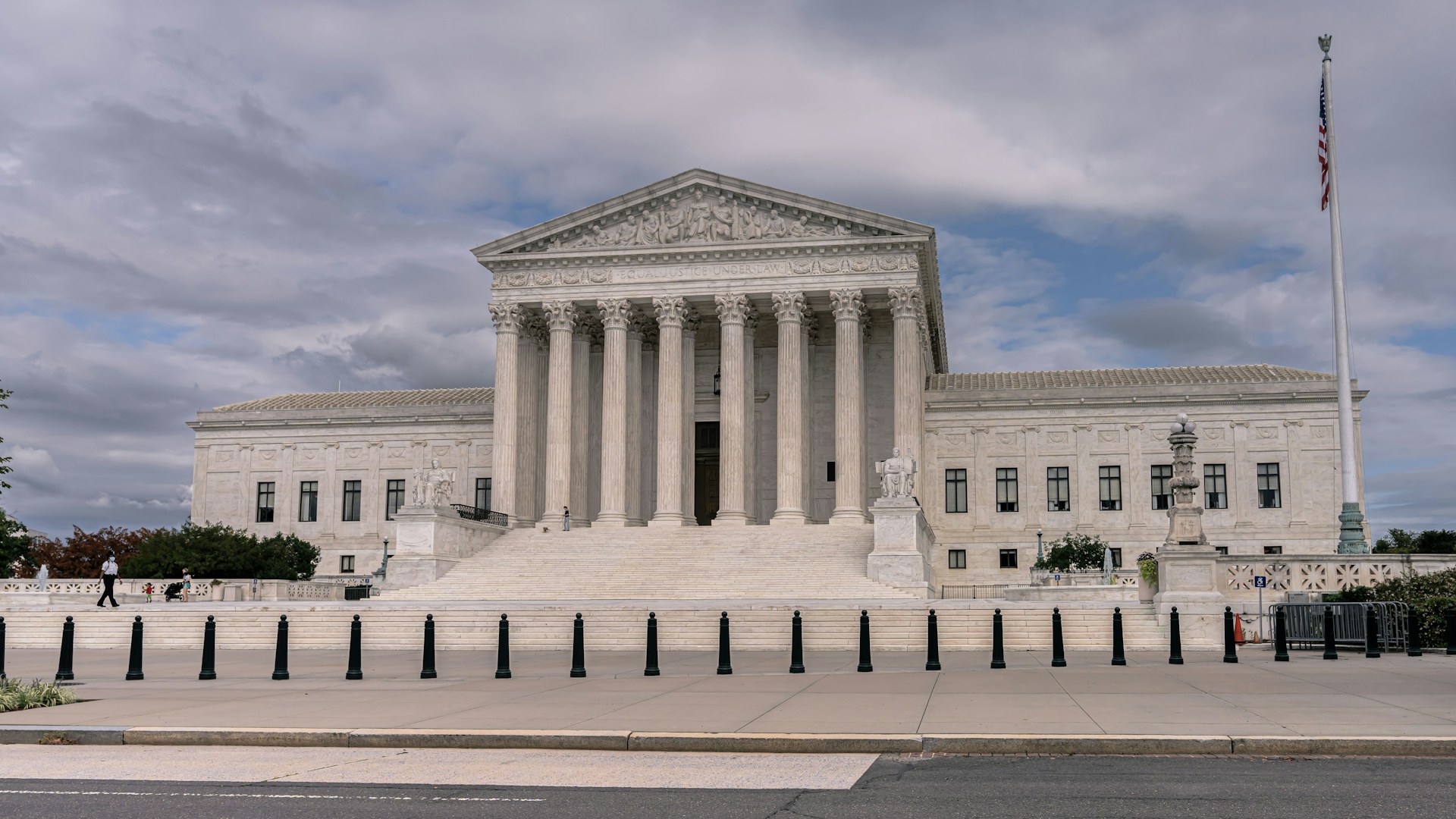The dangers of using medical consensus to dilute the First Amendment


Please note that the views of outside contributors do not reflect the official opinions of SCOTUSblog or its staff.
The Supreme Court recently heard oral argument in Chiles v. Salazar, a challenge to Colorado’s law prohibiting licensed mental-health professionals from engaging in “any practice or treatment” that “attempts or purports to change” a minor’s sexual orientation or gender identity. To justify the law, Colorado points to a consensus among “[e]very major professional healthcare association in the country” that such therapy “is not just ineffective and unnecessary, but can be harmful, especially to minors.” One of the central issues in the case is thus how courts should treat claims of “medical consensus” in free speech cases. At the oral argument on Oct. 6, Justice Samuel Alito referenced Buck v. Bell, an infamous 1927 case in which the court relied on medical opinion to uphold a Virginia law allowing the sterilization of the “feeble minded.”
Although some commentators criticized Alito’s comments, his concerns were entirely justified. Buck is relevant not as an ethical analogy to Colorado’s law, but as a historical illustration that constitutional rights are at risk when judicial scrutiny rises and falls with professional consensus.
To understand why, we need to delve a little deeper into the legal issues in play. The legal question in Chiles is whether, as applied to talk therapy, Colorado’s law burdens speech in violation of the First Amendment. Central to that question is which level of judicial scrutiny Colorado’s law must satisfy. If the law is subject to the rational-basis test, the weakest form of judicial scrutiny, Colorado’s law may remain in place so long as it is rationally related to a legitimate government purpose. In practice, this means courts would give Colorado more leeway on less evidence.
Alternatively, the court could decide that the law should be subject to heightened First Amendment scrutiny. Under these circumstances, it would not be enough for the state to show that it had some rational basis to ban the therapy at issue. Rather, Colorado would need to justify the law using a far greater amount of evidence that courts would scrutinize much more carefully.
During oral argument, Colorado Solicitor General Shannon Stevenson conceded that laws restricting speech about some topics but not others are normally subject to heightened scrutiny. Although she contended that Colorado’s law could pass any constitutional test, including the most stringent level of scrutiny, she argued that Colorado’s law should be subject to rational-basis review because it is regulating licensed professionals under a “standard of care.” In other words, Colorado offered the standard of care as a path out from under heightened First Amendment scrutiny – out of what Justice Elena Kagan called “free speech land” and into “doctor land.”
Several justices questioned why a standard of care should spare a burden on First Amendment rights from heightened scrutiny. Specifically, Alito asked whether Colorado is relying on the standard of care on the ground that it reflects medical consensus. When Stevenson responded that it was, Alito posed a series of questions invoking periods when such consensus endorsed now-indefensible policies –including IQ-based sterilization during the eugenics movement and the institutionalization of children with Down syndrome.
These are not abstract worries. Rather, they show that when courts in the past have accepted the government’s invocation of professional consensus as a substitute for judicial review, they have opened the door to shocking rights violations.
Take Alito’s reference to eugenics. In the early 1900s, the eugenics movement argued that society could “improve” the population by – among other things – institutionalizing and forcibly sterilizing individuals who were deemed “unfit.” This theory was taught in leading universities, formally endorsed by professional bodies (including the American Medical Association), embraced by leaders of professional organizations (including 31 presidents of the American Psychological Association), and written into law: From 1907-1937, 32 states had enacted sterilization statutes, under which state officials could order non-consensual surgical sterilization (typically through an administrative process overseen by boards or superintendents). Roughly 60,000 people were sterilized under those laws.
The appeal of eugenics was widespread. Oliver Wendell Holmes Jr., then a justice on the Supreme Court and a leading legal thinker, openly advocated for eugenics in a 1915 article: progress would come, he claimed, “only by taking in hand life and trying to build a race,” which he offered as a “starting point for an ideal for the law.”
In 1927, Holmes seized the opportunity to stamp those views on the Constitution. In Buck v. Bell, the court considered a challenge to Virginia’s 1924 Sterilization Act, which authorized state institutions to sterilize inmates labeled “feeble-minded.” By then, the eugenics moment was waning. But Virginia pressed on, selecting Carrie Buck – a poor teenager raped by a relative of her foster family and labeled as “feeble-minded” – along with her mother and infant daughter, for sterilization. Buck argued that the sterilization violated her 14th Amendment rights to due process and equal protection. After losing in the Virginia courts, her case made its way to the Supreme Court.
The evidentiary record before the court was a charade. Professor Phillip Thompson notes that Buck’s designation as feeble-minded was based on the testimony of “experts” who never personally examined her. Buck’s lawyer, Irving Whitehead, was not only a close friend and political ally of the state’s and hospital’s attorneys, but he was also affiliated with the very hospital that Buck was suing.
By a vote of 8-1, the Supreme Court upheld the Virginia law. Holmes noted the statute’s procedural requirements, declared the “rights of the patient” carefully considered, and blessed the state’s argument that it may sterilize those who “sap the strength of the State … in order to prevent our being swamped with incompetence.” As he infamously concluded, “It is better for all the world if, instead of waiting to execute degenerate offspring for crime or to let them starve for their imbecility, society can prevent those who are manifestly unfit from continuing their kind … [t]hree generations of imbeciles are enough.”
Buck remains a tragic, cautionary tale of what happens when courts treat “medical consensus” and expert assertion as a stand-in for judicial scrutiny.
That history brings us back to Chiles. The medical consensus about change-oriented talk therapy that Colorado gestures toward may strike many as sound, but consensus is not a constitutional standard – it can shift, sometimes drastically. One need not be a skeptic of expertise to recognize the dangers of setting constitutional rights to the moving needle of professional opinion.
Indeed, in 2018 the court itself acknowledged this danger in the context of a First Amendment challenge. In National Institute of Family and Life Advocates v. Becerra, the majority rejected the “professional speech doctrine,” under which some lower courts categorized speech as unprotected “conduct” when based on expert knowledge or occurring in the context of a professional relationship. The court noted that governments have, at times, invoked the language of science and expertise to “suppress unpopular ideas or information” – precisely the risk that animated Alito’s questions in Chiles.
This is not to say that medical standards and professional consensus should play no role in First Amendment cases. There are two distinct ways to understand the role of a “standard of care” in First Amendment cases. The first, exemplified by Colorado’s argument in Chiles, amounts to consensus as exemption. This treats a professional standard as a key factor placing some speech beyond ordinary constitutional protection. The second is consensus as evidence. Here, courts consider medical standards and professional consensus as part of the government’s proof under traditional First Amendment scrutiny – what is the evidence of harm, how serious is the harm, how well does the law fit that harm? Unlike the first approach, this respects the First Amendment by requiring the government to meet a heavy burden when it restricts protected speech and avoids inviting the kind of deference that produced Buck.
Ultimately, the issue in Chiles is not whether change-oriented talk therapy is efficacious or wise. Rather, the question is whether a law restricting what professionals may say can evade First Amendment scrutiny simply by the state invoking a professional standard of care. The shameful result in cases like Buck v. Bell demonstrates the profound danger of substituting medical expertise for our constitutional rights.
Disclosure: Please note that the Institute for Justice, where the author works, filed an amicus brief in support of neither party in Chiles v. Salazar.
Posted in Merits Cases
Cases: Chiles v. Salazar (Conversion Therapy)